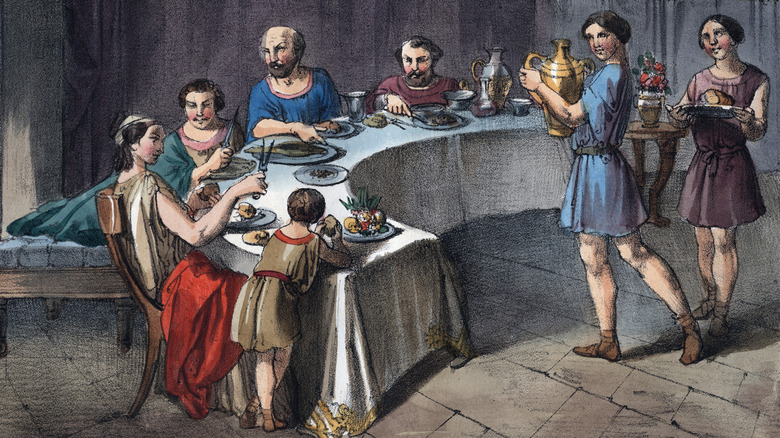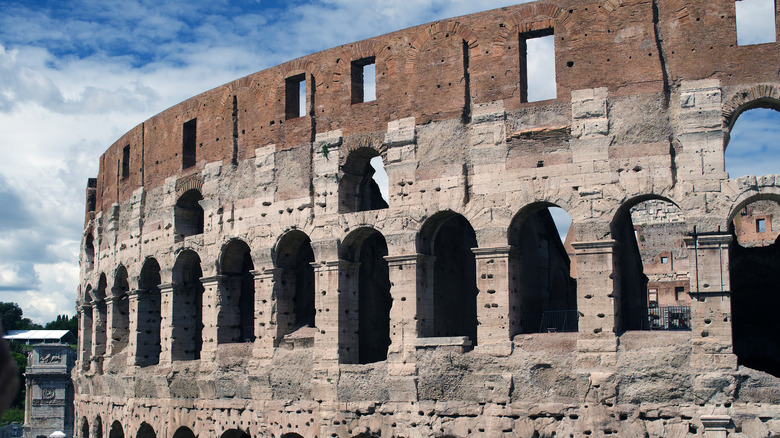Did The Ancient Romans Actually Vomit Between Courses?
The ancient Romans certainly had unique culinary customs compared to what we're used to these days. These included lounging on couches while eating at lavish dinner parties and sometimes feasting on exotic birds such as flamingos. Out of all of those habits, you might have long believed that ancient Romans were keen on vomiting between courses at feasts to make room for the next plate of food. Despite what your favorite high school history teacher taught you, providing a place for guests to regurgitate their food wasn't part of how to plan a dinner party in ancient Rome.
There were indeed areas called vomitoriums in ancient Roman times. However, they weren't rooms designed to purge and prepare for the next round of food. Instead, these areas were passageways with entrances in amphitheaters that helped ancient Romans quickly get to their seating areas, according to History.com. The vomitoriums in Rome's historic Colosseum could get up to 50,000 spectators to their seats in 15 minutes and that's without the help of the screens and other technologies we have at stadiums in modern times.
Debunking the myth of Romans vomiting between courses
Roman culture certainly has a legitimate culinary legacy, like adding unconventional spices to wine. Purging between courses of meals is not part of that legacy, however. This whole myth seems to be based on the commentary of Macrobius, a Roman writer who joined the word "vomitus" with "orium" to describe how the entrances in the amphitheaters allowed for guests to quickly fill empty seats, according to Scientific American. Macrobius used the term "disgorged" and since the Romans were known for their adoration of lavishly eating at decadent dinner parties, it became a misunderstood analogy that was taken quite literally over time, especially in the pop culture oeuvre.
It seems that the first widespread — and wrong — references to vomitoriums were in Aldous Huxley's 1923 novel "Antic Hay" and later in "The City in History" by Lewis Mumford. You might have more recently seen a nod to this debunked ancient Roman custom in scenes of "The Hunger Games" movies. Today, archeologists working on the ruins of Ancient Rome still use the terms vomitorium and vomitoria but those terms have nothing to do with any grotesque eating habits of the ancient Romans. We're just glad to find out that all of the decadent foods eaten by the ancient Romans at these feasts like cheese, wine, and fresh fish didn't just end up being regurgitated.

